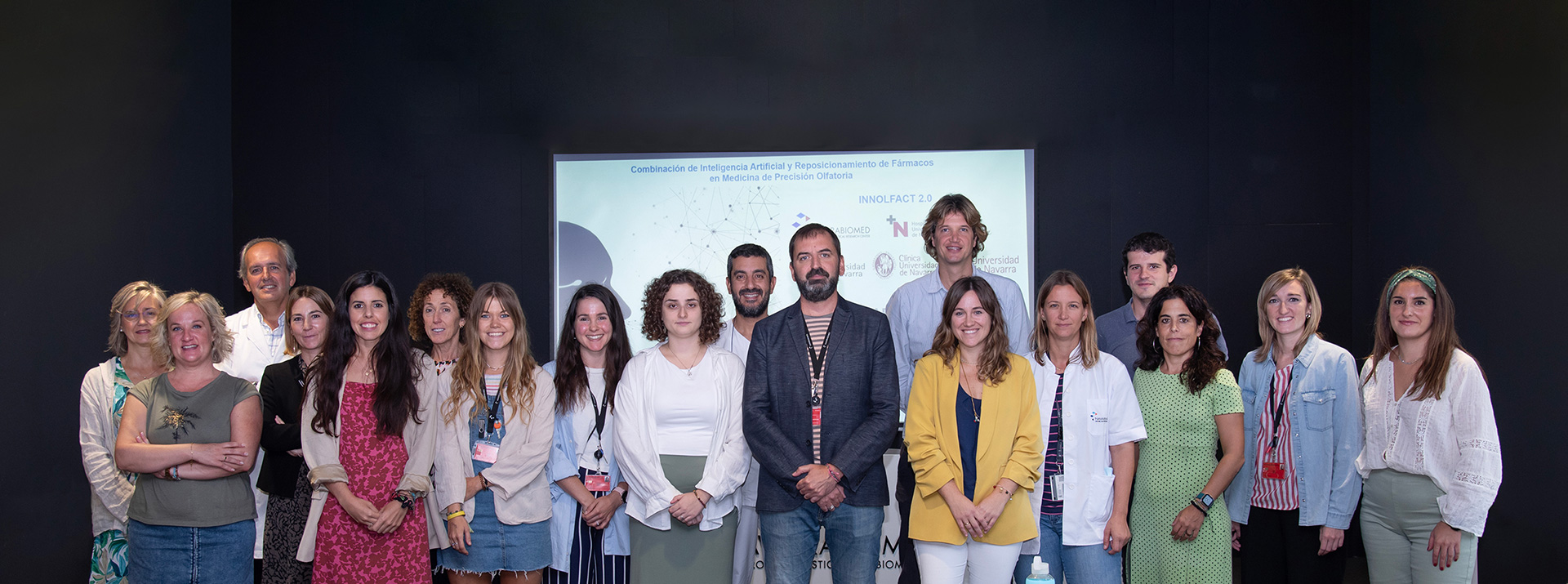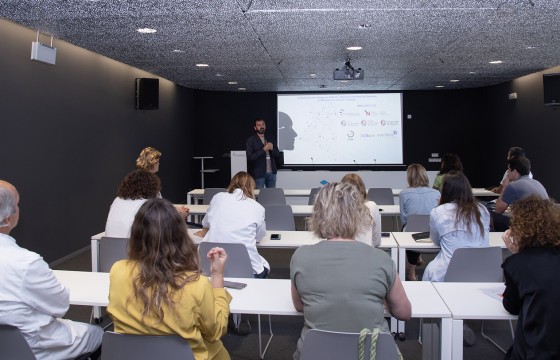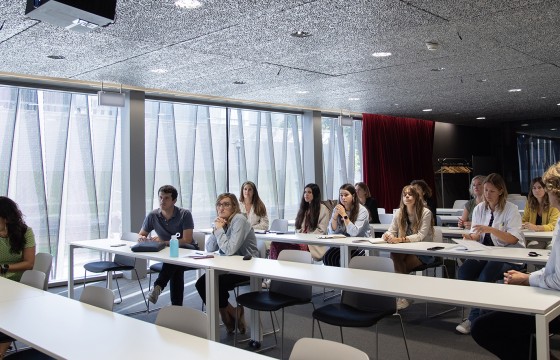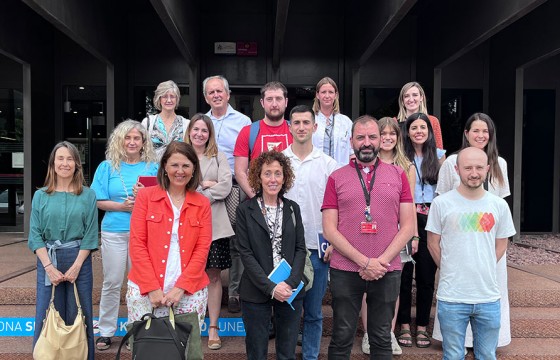
INNOLFACT 2.0 brings together a multidisciplinary consortium to implement Olfactory Precision Medicine in Navarra
- This initiative, funded by the Regional Government of Navarra, will use artificial intelligence, machine learning and nanotechnology to develop diagnostic biomarkers for neurodegenerative diseases.
The strategic INNOLFACT 2.0 project, awarded 1.6 million euros by the Government of Navarra, is the continuation of INNOLFACT, which finished in 2022. The goal of this second phase is to develop innovations in the early diagnosis and classification of patients from the Geriatric and Neurology Services, and to develop new therapies tat modulate the immune system in the brain to improve cognitive and motor function. Specifically, the aim is to make progress in the early diagnosis of neurodegenerative diseases, identify biomarkers indicative of progression of the disease, allow sensory training, and to develop intranasal therapies targeting the central nervous system. This approach consolidates and implements Olfactory Precision Medicine in Navarra, thus making us pioneers in generating innovation via smell.
Multidisciplinary consortium
INNOLFACT 2.0 is headed by Enrique Santamaría, principal investigator of the Clinical Neuroproteomics Unit at Navarrabiomed, and Ana María García-Osta, co-PI of the project and investigator in the Neurological Disease Gene Therapy Program at the Cima Universidad de Navarra. The project has a team of the very highest level comprising multidisciplinary clinical R&D&I profiles from the Hospital Universitario de Navarra and the Clínica Universidad de Navarra, the Navarrabiomed research centres and Cima at the Universidad de Navarra: experts in geriatrics, otorhinolaryngology, neurology and neurobiology, immunology, engineering, nanotechnology, biochemistry, proteomics, bioinformatics, data analysis, algorithm development and artificial intelligence.
The INNOLFACT 2.0 team is also boosted by the participation of two companies from Navarra. These companies NNBi will promote the development of predictive algorithms and digitalisation of the healthcare setting, thereby improving the diagnostic capacity and follow-up of neurodegenerative diseases and ageing. They will alsoEversens help with the identification of biomarkers correlated with the different stages of cognitive impairment in patients by developing medical devices that allow non-invasive monitoring.
Finally, the project consortium is completed with the participation of ADItech, coordinator of the SINAI, which leads the “Investigation from a gender perspective” to contribute to the scientific excellence of R&D&I agents and position Navarra at the forefront internationally.
Challenges faced by INNOLFACT 2.0
Clinical, research and digitalisation tools that allow precision medicine, and the technological progress associated with this sector in Navarra are all required to overcome the human and economic challenges raised by ageing and neurodegenerative diseases. Traditionally, the sense of smell is considered to be less relevant than sight or hearing. However, our findings in the context of the INNOLFACT project show a direct link between the immunomodulatory capacity of the olfactory system and the impact thereof on cognitive and, possibly, motor functions. The treatment of Parkinson’s and Alzheimer’s disease requires the active compounds administered to reach the brain.
However, drug administration presents a series of obstacles, the main one being passage through the blood-brain barrier (BBB), which protects the brain against the entry of foreign substances. This protection means that the BBB is essentially impermeable to almost all drugs administered systemically, thus preventing them from reaching an effective concentration in the brain to exert their action. In this context, intranasal administration appears to be a promising alternative given its more direct access to the brain, thus making it faster and, in turn, safer, as a lower dose can be used. This factor has generated, and continues to generate, growing interest in inhaler-based treatments.
The INNOLFACT 2.0 project aims to introduce innovations in early diagnosis by using smell and the immune system. In addition, it also aims to classify patients in the Geriatric and Neurology departments to develop new therapies that modulate the immune system at a brain level. This will be carried out using artificial intelligence, machine learning and nanotechnology as the central aspect. Taking advantage of the knowledge and state-of-the-art developments provided by the different partners, the aim is to provide a range of olfacto-immunological analyses that allow a personalised approach to ageing and neurodegenerative diseases.
The project intends to apply cutting-edge methods and technologies, especially the databases available (data collected by both HUN and CUN) from patients who participated in the INNOLFACT study over the period 2020–2022 to identify new diagnostic biomarkers. A more exhaustive study of immune cells and molecules will be carried out, exploring their role in the cognitive process. Moreover, efficacy tests will be carried out for drugs in animal models of neurodegeneration (males and females) established in the previous project. In this sense, the neurocognitive and biological response to stimulation of the sense of smell in participants aged over 65 years with different degrees of cognitive impairment and frailty will be studied.
At a social level, INNOLFACT 2.0 is supported by the Asociación Navarra de Parkinson [Parkinson’s Association of Navarra] (ANAPAR), the Asociación de Familiares de Enfermos de Alzheimer de Navarra [Association of Families of Alzheimer’s patients of Navarra] (AFAN), Confederación Española de Alzheimer [Spanish Alzheimer’s Confederation] (CEAFA), Federación Española de Parkinson [Spanish Parkinson’s federation] (FEP), Federación de Asociaciones de Personas con Discapacidad Física y Orgánica [Federation of Persons with Physical and Organic Disability] (COCEMFE Navarra), Sociedad Española de Geriatría y Gerontología [Spanish Society for Geriatrics and Gerontology] (SEGG), Red Olfativa Española [Spanish Olfactory Network] (ROE), and support from the following companies: CINFA, 3P Biopharmaceuticals and Ojer Pharma.




